The Basic Parts Required for the Operation of the Air Compressor
18 October 2023, Wednesday
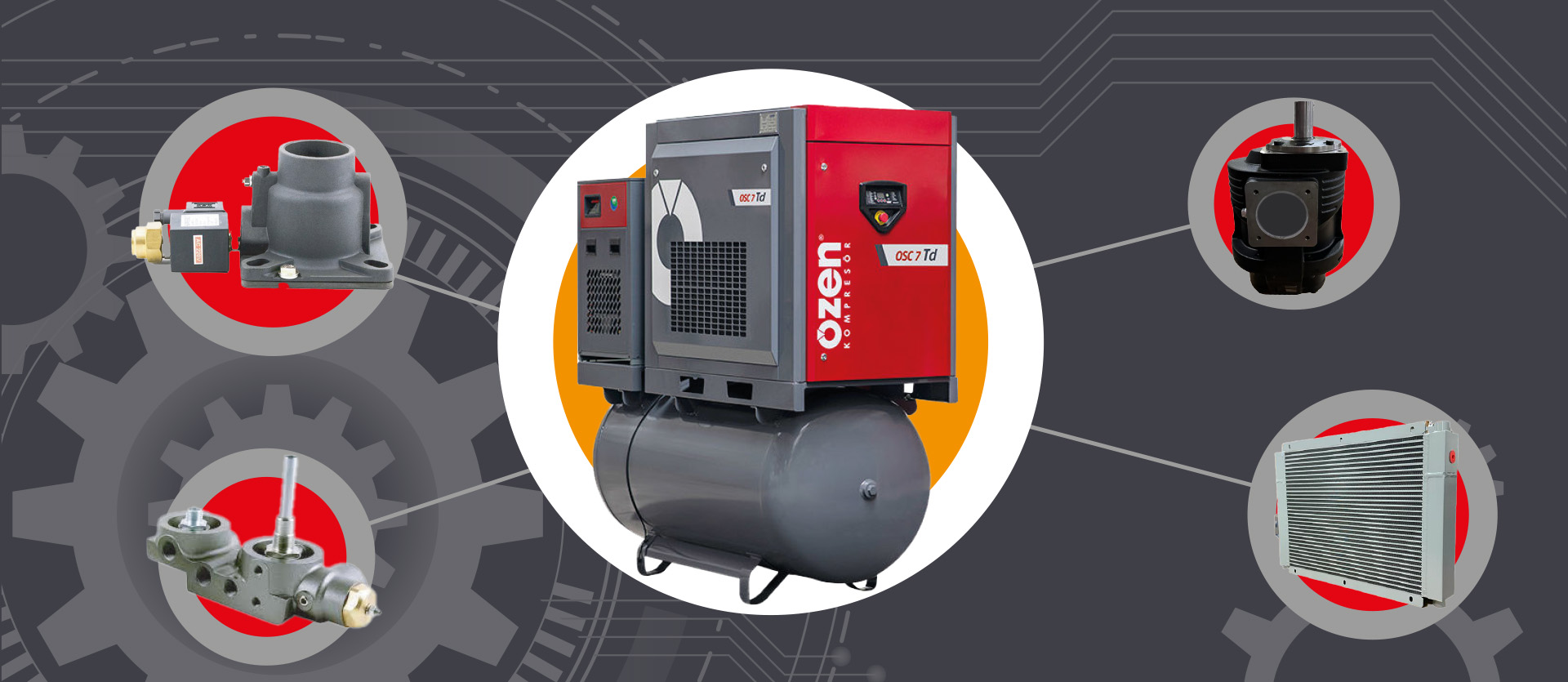
A compressed air compressor is a system in which many elements work together. It contains many elements from the compressed air tank to the compressor air regulator. In this article, we will talk about compressed air compressor elements.
What Is a Compressed Air Compressor?
A compressed air compressor is a machine that compresses atmospheric air to high pressure. Basically, a compressor compresses air using power from an energy source (electric motor, diesel engine, gas engine, etc.) and creates a high-pressure air supply.
Compressed air compressors usually work like this.
Suction: The compressor uses a suction valve to suck in atmospheric air. The sucked air passes through the filter and is cleaned.
Compression: The sucked air is compressed through mechanisms such as a cylinder and piston system or screw rotors. The compressor compresses the air molecules together, reducing its volume and increasing its pressure.
Cooling: The compressed air is usually cooled by a cooling system. This reduces the risk of condensation by lowering the air temperature and provides a more efficient compression.
Storage: The compressed air is transferred to an air tank, where it is stored as a high-pressure air source. The air tank regulates pressure fluctuations in the system and provides air when needed.
Control and Distribution: The stored compressed air is directed to the points of use through control valves and pipelines. Pneumatic equipment, vehicles, or machines perform certain operations using compressed air.
Compressed air compressors come in different types and have different operating principles. For example, commonly used types include reciprocating compressors, screw compressors, rotary crawler compressors, and centrifugal compressors. The selected compressor type is determined depending on the application requirements and airflow requirements.
What are the Compressed Air Compressor Elements?
A compressed air compressor is a machine consisting of various elements. Here are the basic elements of a compressed air compressor in general:
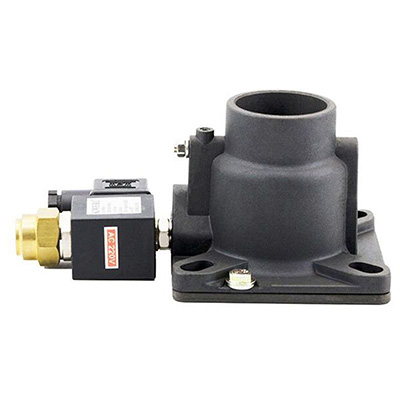
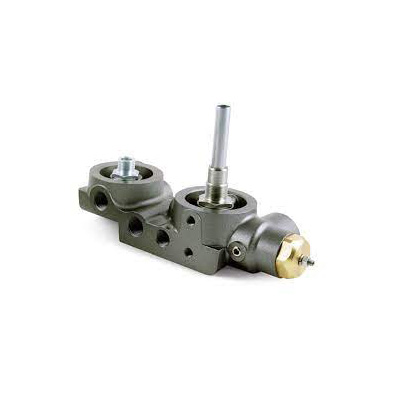
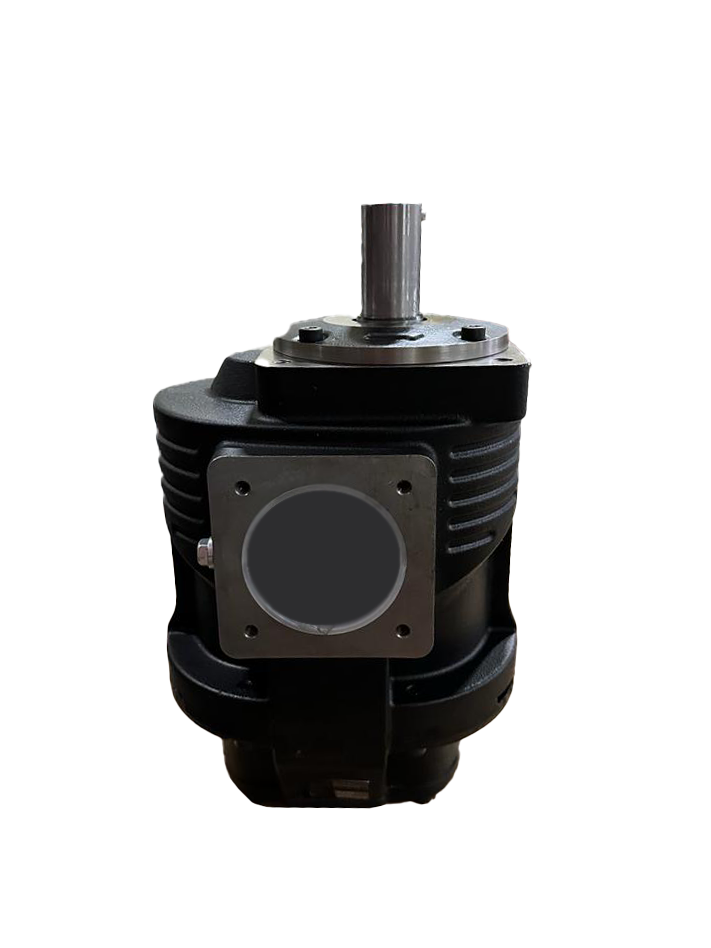
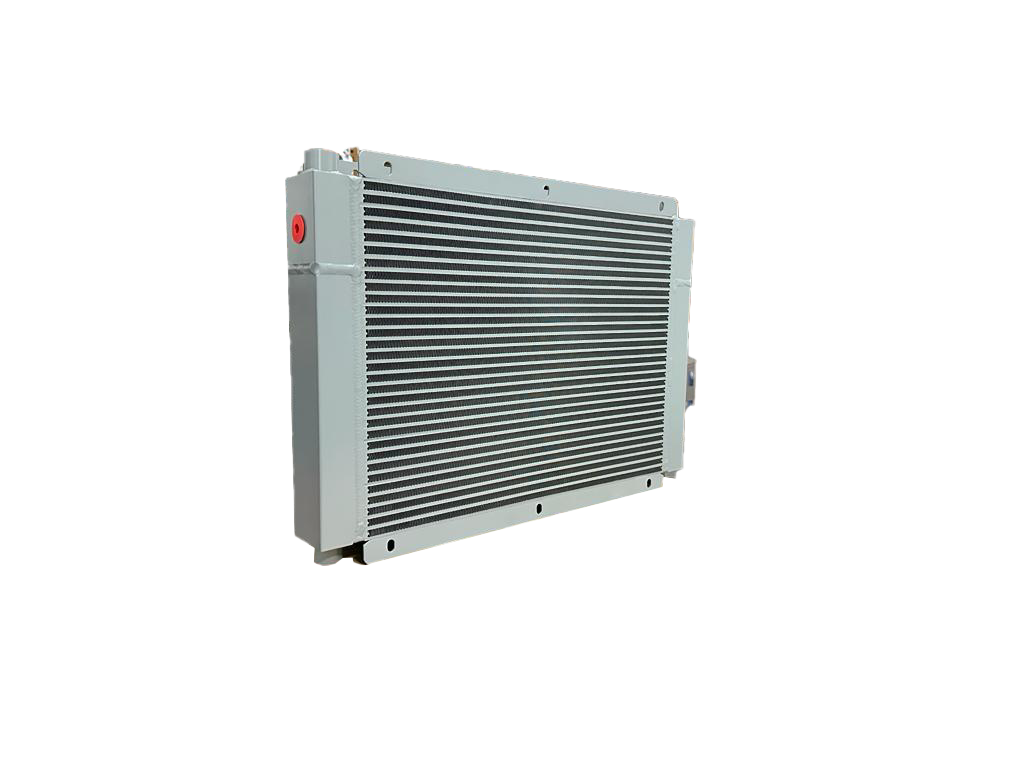
Suction Filter: It is a filtration element used to remove dust, dirt, particles, and other pollutants from the atmosphere before the compressor absorbs air. It ensures that the absorbed air is clean and pure.
Intake Valve: It is the valve through which the compressor draws atmospheric air in during the suction stage and allows it to enter the compression chamber. The intake valve is opened and closed by the movement of the piston in reciprocating compressors or the rotors in screw compressors.
Compression Element: The compression element inside the compressed air compressor generates compressed air by compressing the air. This element can usually be of different types, such as pistons, screw rotors, rotary pallets, or centrifugal impellers.
Cooling System: The compressed air inside the compressor heats up. The cooling system is used to reduce the temperature of the compressed air. It usually contains components such as air- or water-cooled radiators or oil coolers.
Lubrication System: Some compressors require lubrication to reduce the friction of compression elements and other moving parts and improve operating efficiency. The lubrication system ensures the lubrication and protection of the parts inside the compressor.
Dryer System: A compressed air dryer is a device used for the removal of moisture and water vapor in compressed air systems. These dryers condense water vapor by cooling compressed air and then remove this condensed water from the system to obtain dry air. In this way, it is ensured that the humidity in the compressed air system is kept under control.
Pressure Regulation and Control Systems: The compressed air compressor has pressure adjustment and control systems to ensure a certain operating pressure. These systems monitor the pressure level, perform protection and control functions, and stop or activate the compressor operation when necessary.
Storage Tank: The compressed air produced from the compressed air compressor is directed to a storage tank. The storage tank stores compressed air and regulates pressure fluctuations. It also functions as a point for regulating the airflow and distributing it to the points of use. These elements represent the basic components of a compressed air compressor.
What Is a Compressed Air Tank?
A compressed air tank is a capacity in which compressed air is stored and regulated in compressed air systems. It is also called an air reservoir or air storage.
The main purpose of the compressed air tank is to store the compressed air produced by the compressor and make it available when necessary. The tank regulates pressure fluctuations in compressed air systems, stabilizes the compressed air supply, and regulates airflow.
Some basic functions of a compressed air tank are as follows:
Pressure Balancing: The compressed air tank regulates the fluctuation of the airflow generated by the compressor. The compressor produces air when necessary, and the tank stores the excess amount of air produced. Thanks to this, the airflow is provided in a more stable way.
Emergency Source: In cases such as power failure or compressor failure, the compressed air tank serves as an available emergency source to feed into the system. The compressed air stored in the tank can maintain the operation of the equipment in the system for a certain period of time.
Pressure Stabilization: The compressed air tank is used to maintain a certain working pressure. The air produced by the compressor is delivered to the tank, where the compressor stops when it reaches the set pressure level. When the pressure in the pressure tank drops, the compressor switches back on and raises the pressure again.
Water and Particle Separation: The compressed air tank can function to remove water vapor and particles from the air delivered to the system. The condensed water vapor is collected in a puddle at the bottom of the tank and periodically drained.
The compressed air tank is usually made of durable materials such as steel or aluminum. Their size and capacity may vary depending on the compressed air requirement and application requirements.
Furthermore, the tanks may have additional features such as pressure gauges, safety valves, and connection points.
What Is a Compressed Air Dryer?
A compressed air dryer is a device used for the removal of moisture and water vapor in compressed air systems. The working principle is to condense the water vapor in the compressed air into liquid water and then remove this water from the system. Thus, the amount of moisture in the compressed air system is reduced and a dried air supply is achieved.
The main purpose of compressed air dryers is to prevent the negative effects caused by humidity and to ensure the safe, efficient, and durable operation of air systems. Humid air can cause various problems in compressed air systems, for example:
Corrosion and Rusting: Humid air can lead to corrosion and rust in pipelines, valves, air vehicles, and other equipment. This situation shortens the life of the equipment and increases the maintenance costs.
Air Tool Problems: Humid air can reduce the valve speed in pneumatic systems, causing adhesions and leaks in the valves. This prevents the equipment from working correctly.
Poor Quality Control: Humid weather can cause undesirable consequences in production processes. For example, the presence of moisture can have undesirable consequences in painting or coating processes or affect the quality of products.
What is an Air Compressor Filter?
An air compressor filter is a component used in compressed air systems. It is mainly used to clean the air during the suction phase of the compressor and to keep particles, impurities, and pollutants that can damage the system. The air compressor filter is important for improving air quality, protecting equipment, and ensuring the efficient operation of the system.
The air compressor filter can have two main types:
Suction Filter: This filter is located at the point where the compressor absorbs air from the atmosphere. Its main purpose is to capture dust, dirt, particles, pollen, and other harmful substances in the absorbed air. The intake filter cleans the air before entering the air system, ensuring the protection of parts inside the compressor and the production of purer compressed air.
Oil Separation Filter: This filter is used in oil compressors and traps oil vapor and oil droplets in the absorbed air. The oil separation filter prevents oil from entering the compressed air system, making the air cleaner and oil-free. This improves air quality and extends the service life of equipment connected to the air system. It is important to maintain and clean the air compressor filter regularly. A dirty or clogged filter can block the airflow and reduce the performance of the compressor. Therefore, filters may need to be checked, cleaned, or replaced periodically.
What is a Compressor Air Regulator?
A compressor air regulator is a regulating device used in compressed air systems. It is mainly used to control the flow and pressure of compressed air produced by the compressor. Air regulators are used to adjust the desired pressure level and keep it stabilized.
The main functions of the compressor air regulator are as follows:
Pressure Adjustment: The air regulator adjusts the air pressure entering the compressed air system. This allows the compressed air supplied to the system to be adjusted to the desired values. The regulator controls the airflow depending on the pressure level set by the user.
Pressure Stabilization: The air regulator is used to keep a certain pressure level constant. The air pressure generated by the compressor may vary, but the regulator interrupts or reduces the airflow when the set pressure value is reached. In this way, the pressure in the system is kept constant within the desired range.
Air Flow Control: The air regulator regulates the amount of air transmitted to the system by controlling the compressed air flow. This ensures the correct and stable operation of the equipment connected to the weather system. The regulator can adjust the airflow according to the user's needs and application requirements.
Safety: The air regulator provides protection of the system from overpressure. In cases exceeding the set maximum pressure level, the regulator is activated and cuts off the airflow. This prevents damage and dangerous situations that may occur in the system.
Air regulators usually have features such as pressure gauges, adjustment knobs, and air outlet connections. These features allow the user to monitor the air pressure, adjust it, and make connections to the air system. The air regulator is an important component used in many compressed air applications, and it is important to set it correctly and maintain it regularly.
